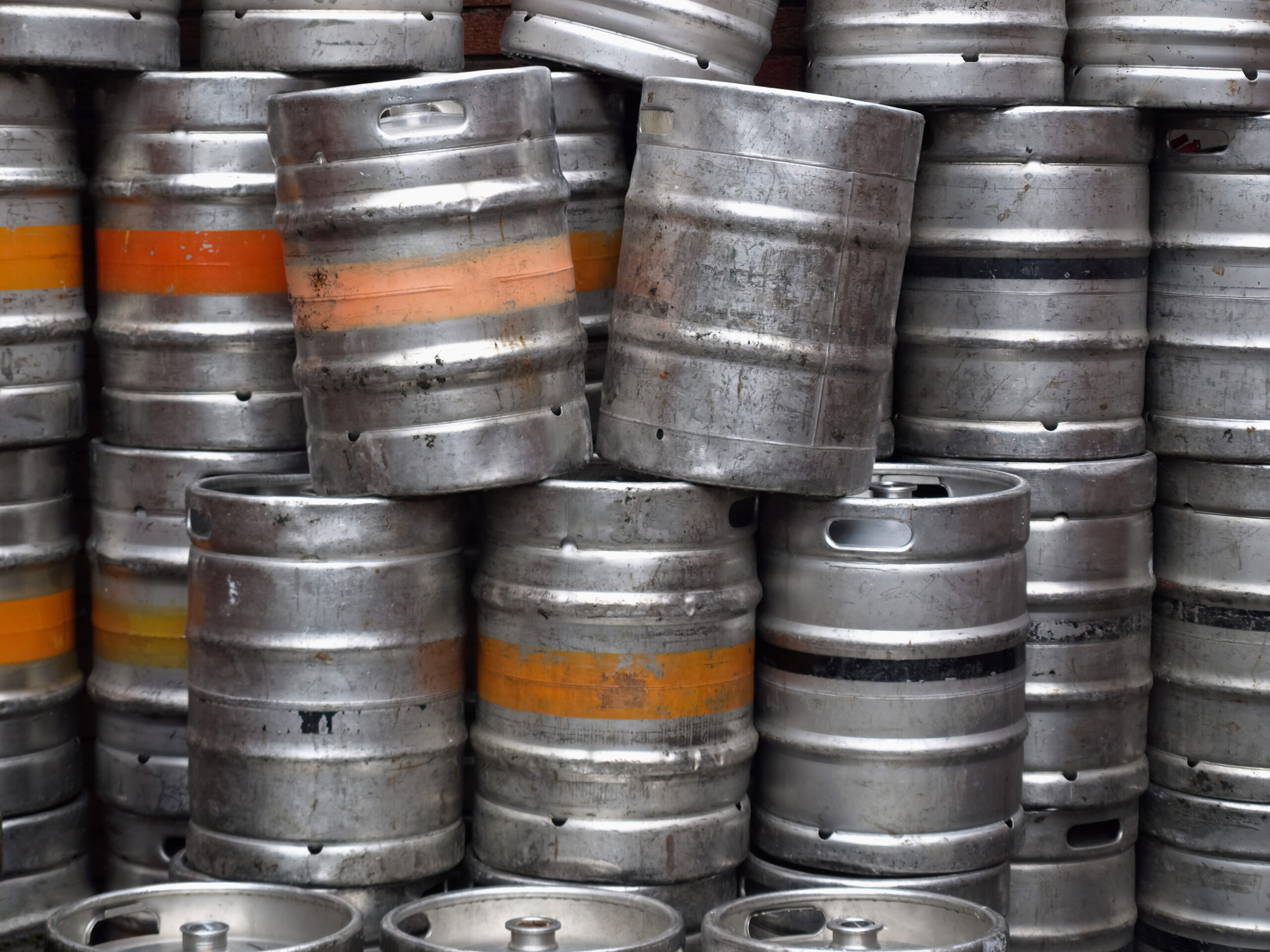Enzyme Influencer: Revolutionizing The Food And Beverage Industry

The Food & Beverage Industry Needs New Material: A Sustainable Future - Source foodindustryexecutive.com
Enzyme Influencer: Revolutionizing The Food And Beverage Industry, the name itself speaks volume. Enzyme Influencer has officially published today, dated xxxx-xx-xx.
So what's the big deal about Enzyme Influencer? Why should you care? You should care because Enzyme Influencer has been proven to revolutionize the food and beverage industry.
After careful analysis, research, and digging out information, we put together this Enzyme Influencer: Revolutionizing The Food And Beverage Industry guide to help you make the right decision.
FAQ
This comprehensive list of frequently asked questions illuminates the revolutionary impact of enzymes on the food and beverage industry. Addressing common concerns and shedding light on misconceptions, these FAQs provide valuable insights into the transformative power of enzymes.
Question 1: What are enzymes and how do they impact the food and beverage industry?
Enzymes are naturally occurring proteins that act as catalysts in biochemical reactions. In the food and beverage industry, enzymes play a crucial role in various processes, including food processing, flavor development, and nutritional enhancement. They enable efficient breakdown of complex molecules, enhance texture, and improve overall quality of food and beverages.
Summary of key takeaways or final thought: Enzymes are essential for the production of high-quality, nutritious, and flavorful food and beverages. Through their catalytic properties, enzymes enable efficient and precise processing, leading to improved taste, texture, and nutritional value.
Transition to the next article section: Explore further in the following section to discover how enzymes are revolutionizing the food and beverage industry through innovation and sustainability.
Tips
The article Enzyme Influencer: Revolutionizing The Food And Beverage Industry analyzes the transformative role of enzymes within the food and beverage domain. To harness the full potential of enzymes, the following tips offer practical guidance for industry professionals:
Tip 1: Identify Enzyme Applications
Explore enzymes' versatility in food and beverage applications. Consider their ability to enhance flavors, textures, and nutritional content. Research different enzymes and their specific functionalities to optimize product development.
Tip 2: Optimize Enzyme Concentration
Determine the optimal enzyme concentration for each application. Too low concentrations may limit enzymatic action, while excessive amounts can result in undesired outcomes. Experiment with different levels to achieve the desired results.
Tip 3: Control Temperature and pH
Enzymes exhibit optimal activity within specific temperature and pH ranges. Monitor these parameters during enzyme application to ensure maximum efficiency. Adjust conditions accordingly to maximize enzyme performance.
Tip 4: Consider Enzyme Stability
Evaluate enzyme stability under various processing conditions. Some enzymes may be sensitive to heat, pH, or other factors. Choose enzymes that maintain their activity throughout the production process.
Tip 5: Enhance Process Efficiency
Enzymes can streamline production processes, reducing time and energy consumption. Optimize enzyme usage to minimize processing steps, improve yields, and increase overall efficiency.
Tip 6: Ensure Enzyme Quality
Select enzymes from reputable suppliers that adhere to industry standards and quality control protocols. High-quality enzymes ensure consistent performance, product safety, and regulatory compliance.
Tip 7: Collaborate with Enzyme Experts
Consult with enzyme specialists to gain in-depth knowledge and technical support. They can provide guidance on enzyme selection, application optimization, and troubleshoot any challenges encountered.
By incorporating these tips into enzyme usage, food and beverage manufacturers can unlock the transformative potential of enzymes. Enhanced product quality, improved process efficiency, and innovative applications are just a few of the benefits that await those who embrace the power of enzymes.
Enzyme Influencer: Revolutionizing The Food And Beverage Industry
Enzyme influencers, as an indispensable part of the food and beverage industry, play a transformative role in shaping the sector. These influencers, equipped with expertise in enzyme technology and industry knowledge, are crucial in:
- Enzyme Applications: Unlocking enzymes' potential to enhance food quality, optimize production processes, and innovate new products.
- Sensory Enhancement: Refining taste, texture, and appearance of food and beverages through targeted enzyme applications.
- Nutritional Fortification: Improving nutritional value by enriching food with enzymes that promote bioavailability and absorption.
- Sustainability Practices: Advancing sustainable practices by utilizing enzymes to reduce waste, conserve energy, and minimize environmental impact.
- Industry Advocacy: Promoting the understanding and adoption of enzymes within the food and beverage sector, fostering innovation and collaboration.
- Regulatory Compliance: Ensuring adherence to regulatory requirements and safety standards related to enzyme use in food production.
Enzyme influencers' multifaceted expertise serves as a catalyst for the industry's progress. Their knowledge of enzyme characteristics, combined with their understanding of food science and consumer demands, drives the development of novel food products, enhanced sensory experiences, and sustainable manufacturing processes.

NYC Food & Beverage Industry News for July 2024 - Source myemail-api.constantcontact.com
Enzyme Influencer: Revolutionizing The Food And Beverage Industry
The widespread use of enzymes in food and beverage manufacturing has brought about a significant transformation in the industry. Modern enzyme technology empowers us with precise control over specific chemical reactions, enabling the creation of innovative products that meet stringent quality standards and cater to evolving consumer preferences. Many real-life examples demonstrate the revolutionary impact of enzymes in diverse applications.

3 Benefits IoT is Driving in The Food & Beverage Industry - Preddio - Source www.preddio.com
In the production of beverages, enzymes amplify hop utilization, leading to improved flavor profiles in beer. Proteolytic enzymes enhance protein hydrolysis, optimizing clarity and stability in fruit juices. Moreover, the enzymatic conversion of lactose enables the introduction of dairy components into lactose-free products, expanding market reach and inclusivity.
The food industry also benefits immensely from enzyme applications. Enzymes enhance dough conditioning in bread, resulting in improved texture and shelf life. Proteases tenderize meat, making it more palatable and easier to digest. Lipases contribute to the development of flavor and texture in cheese production. In addition, the enzymatic hydrolysis of starch creates valuable ingredients such as glucose syrup and high-fructose corn syrup, widely used as sweeteners in various food products.
The practical significance of understanding the connection between enzymes and the food and beverage industry lies in the ability to harness their transformative potential. Food manufacturers can design products with tailored nutritional profiles, enhanced sensory attributes, and extended shelf life. Consumers benefit from access to a wider range of products that meet their dietary needs and preferences.
Conclusion
The exploration of "Enzyme Influencer: Revolutionizing The Food And Beverage Industry" underscores the profound impact of enzyme technology on the industry. Enzymes empower manufacturers to innovate, optimize processes, and create products that delight consumers. The future holds exciting prospects for further enzyme applications, promising continued advancements in food and beverage production.
The practical understanding of enzyme influence equips food technologists and manufacturers with the knowledge to drive progress, meet consumer demands, and shape the future of food and beverages.